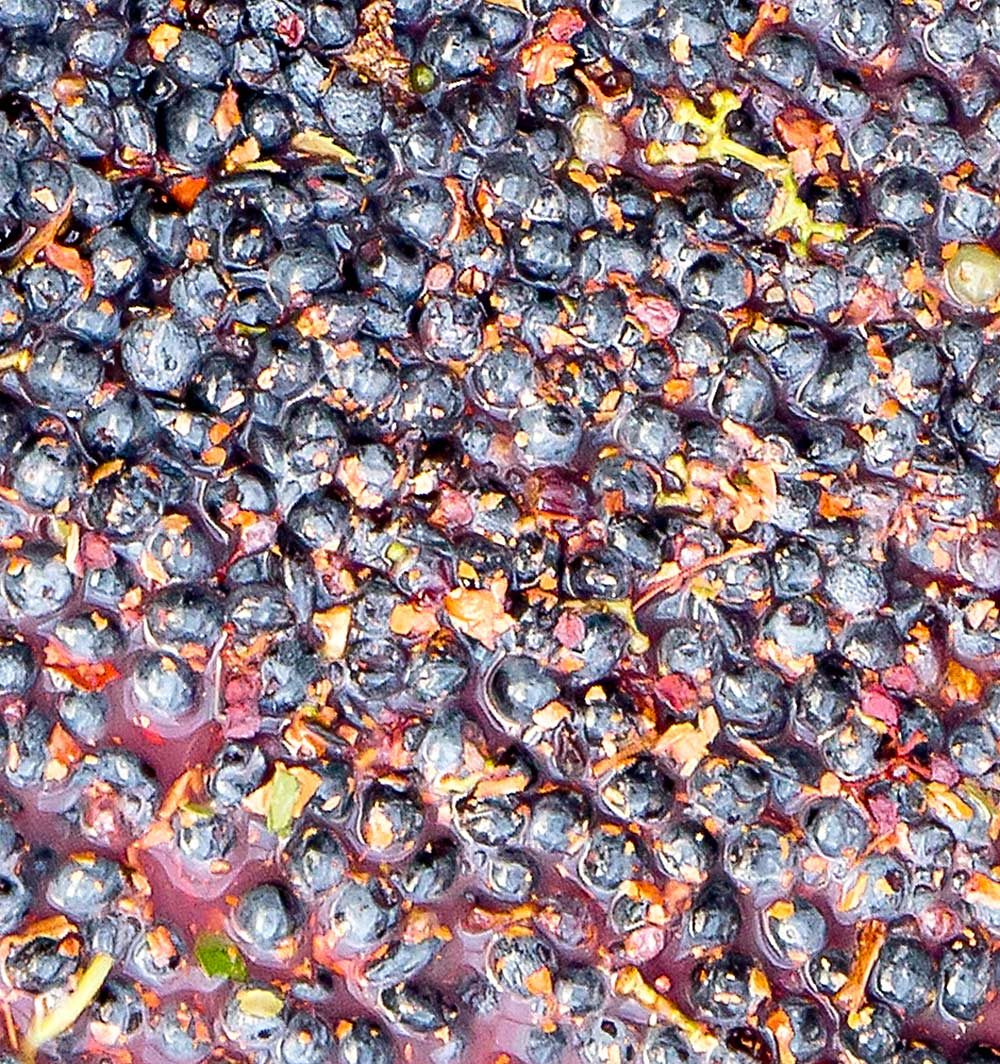A cool September meant a lot of Washington’s Cabernet Sauvignon grapes were still hanging when early freezes hit in early October, creating widespread harvest chaos and crop loss — at a time when the industry already faced an oversupply.
Kevin Corliss, vice president of vineyards for Ste. Michelle Wine Estates, declined to put a number to the loss but called it one of the top-three weather-damage events in his career. Unlike a typical localized freeze, the damage stretched across the state.
“This particular freeze, well, back-to-back frosts, were widespread,” he said. “Very few vineyards were spared, even our Cold Creek and Canoe Ridge vineyards, where I’ve never seen them have crop loss due to early frost, ever, and they had fruit they didn’t pick.”
When the successive freezes hit, the impact was the result of the industry’s growth in late-harvested Cabernet Sauvignon running into a cool fall that delayed maturity. Growers called it an “early frost,” but the second frost on Oct.10 was actually just a week ahead of the state’s long-term average frost date, Corliss said.
Several growers contacted by Good Fruit Grower were reluctant to talk about the impacts of the freeze on their own operations, but they raised concerns about a previously under-the-radar problem: Red wine grapes harvested after a hard freeze can develop off-flavors and aromas that appear to come from bits of the crumbling canopy that stick to the clusters. Mechanized harvest after a hard freeze makes it nigh impossible to avoid some leaf taint, even if the fruit itself was undamaged.
“This really is a game-changer in terms of how we schedule and how we plan and what constitutes a good site, year in and year out, for Cabernet,” Corliss said. As the industry at large faces an oversupply of Cabernet, that’s also an opportunity, he added. “We’re really looking at site and variety with a lot of scrutiny and taking the opportunity to encourage grafting so that only the very best sites, from the perspective of frost and freeze, are getting Cabernet.”
The freeze damage comes as the industry grapples with an oversupply of grapes amid sluggish demand. Ste. Michelle, which crushes about 60 percent of Washington’s wine grapes, has slowed the renewal of contracts with its existing growers and is currently not pursuing many new contracts.

Frozen leaf flavor at fault
After a more localized freeze event in 2017, winemakers asked Washington State University enology professor Jim Harbertson to investigate the cause of unusual and unpleasant floral notes found in red wines made from grapes picked after the frost.
Last season gave him plenty of opportunities to collect samples for the research project the Washington State Wine Commission funded in 2019.
“We had to push fast-forward on the research, and we figured out that it’s the dried, frozen dead leaves that are the cause of the floral taint,” Harbertson said. That wasn’t much of a surprise — industry groups had done their own research in-house that suggested the same concern, as had a professor at Brock University in Ontario, Canada — but none of the findings had been published.
So, he added varying amounts of the dead leaves to wines and discovered that winemakers could detect the unwanted aroma in all of them, even from very tiny amounts, Harbertson said. But wines made with leaves that weren’t frozen caused no issue.
Next, he wants to figure out exactly what volatile compounds cause the off-flavors, how cold it has to be for the leaves to develop them, what winemakers could do to mitigate the flavors, and what markers could be used to indicate a problem in a lot of grapes.
The industry wants published data on that front to point crop insurance adjusters to, he said. But that’s a complicated ask.
How should insurance work if the fruit itself is fine immediately after the freeze, but it’s impossible to harvest without some level of quality taint from the crumbling canopy? Hand harvest might minimize the problem, but it’s certainly not in the price point or feasible on short notice for most of Washington’s vineyards.
Harbertson is working on the project with his aptly named postdoc, Scott Frost, and WSU colleagues, Markus Keller and Tom Collins, to further explore the issue using cold chambers to induce the damage to grapevine leaves and to help run the volatile compound profiles for the affected wines, respectively.
White wines don’t seem to be affected.
“White wines, they typically have loads of these compounds already, so they don’t seem out of place,” he said. “There are some floral Cabs out there, but they are weird.”
Safety net
The freeze loss was so widespread that the Washington Winegrowers Association worked with the governor’s office to request a federal disaster declaration, said executive director Vicky Scharlau. It had not yet been granted when this issue went to press in early January.
It’s her first experience working with the U.S. Department of Agriculture’s Risk Management Agency, which administers crop insurance programs, and the Farm Service Agency, which handles disaster declarations, that can open the door for additional resources to the industry.
“Based on my experience with the RMA and the FSA, both of those agencies are not built on meeting the needs of specialty crops,” she said. “They have no idea how to approach wine grapes.”
But she’s looking at that as an opportunity for Washington Winegrowers and the larger industry to realize the importance of disaster program support for specialty crops in the future. With climate change driving unpredictable weather patterns, it could become increasingly important.
“We don’t need subsidies, but we do need safety nets,” she said. “There’s many things we have to address going forward.” •
—by Kate Prengaman






Leave A Comment